Black And Decker CD1440S Handleiding
Black And Decker
Boormachine
CD1440S
Bekijk gratis de handleiding van Black And Decker CD1440S (7 pagina’s), behorend tot de categorie Boormachine. Deze gids werd als nuttig beoordeeld door 52 mensen en kreeg gemiddeld 3.5 sterren uit 26.5 reviews. Heb je een vraag over Black And Decker CD1440S of wil je andere gebruikers van dit product iets vragen? Stel een vraag
Pagina 1/7

General Power Tool Safety Warnings
WARNING! Read all safety warnings and instructions. Failure to follow the
warnings and instructions may result in electric shock, fire and/or serious injury.
Save all warnings and instructions for future reference.
The term “power tool” in the warnings refers to your mains-operated (corded)
power tool or battery-operated (cordless) power tool.
1) Work area safety
a) Keep work area clean and well lit.
Cluttered or dark areas invite accidents.
b) Do not operate power tools in explosive atmospheres, such as in the presence
of flammable liquids, gases or dust
. Power tools create sparks which may ignite the
dust or fumes.
c) Keep children and bystanders away while operating a power tool.
Distractions can
cause you to lose control
2) Electrical safety
a) Power tool plugs must match the outlet. Never modify the plug in any way. Do
not use any adapter plugs with earthed (grounded) power tools.
Unmodified plugs
and matching outlets will reduce risk of electric shock
b) Avoid body contact with earthed or grounded surfaces such as pipes, radiators,
ranges and refrigerators.
There is an increased risk of electric shock if your body is
earthed or grounded.
c) Do not expose power tools to rain or wet conditions.
Water entering a power tool
will increase the risk of electric shock
d) Do not abuse the cord. Never use the cord for carrying, pulling or unplugging
the power tool. Keep cord away from heat, oil, sharp edges or moving parts.
Damaged or entangled cords increase the risk of electric shock.
e) When operating a power tool outdoors, use an extension cord suitable for
outdoor use.
Use of a cord suitable for outdoor use reduces the risk of electric shock.
f) If operating a power tool in a damp location is unavoidable, use a residual current
device (RD) protected supply.
Use of an RCD reduces the risk of electric shock.
3) Personal safety
a) Stay alert, watch what you are doing and use common sense when operating a
power tool. Do not use a power tool while you are tired or under the influence of
drugs, alcohol or medication.
A moment of inattention while operating power tools
may result in serious personal injury.
b) Use personal protective equipment. Always wear eye protection.
Protective
equipment such as dust mask, non-skid safety shoes, hard hat, or hearing protection
used for appropriate conditions will reduce personal injuries.
c) Prevent unintentional starting. Ensure the switch is in the off-position before
connecting to power source and/or battery pack, picking up or carrying the tool.
Carrying power tools with your finger on the switch or energising power tools that have
the switch on invites accidents.
d) Remove any adjusting key or wrench before turning the power tool on.
A wrench
or a key left attached to a rotating part of the power tool may result in personal injury.
e) Do not overreach. Keep proper footing and balance at all times.
This enables bet-
ter control of the power tool in unexpected situations.
f) Dress properly. Do not wear loose clothing or jewellery. Keep your hair, clothing
and gloves away from moving parts.
Loose clothes, jewellery or long hair can be
caught in moving parts.
g) If devices are provided for the connection of dust extraction and collection
facilities, ensure these are connected and properly used.
Use of dust collection
can reduce dust-related hazards.
4) Power tool use and care
a) Do not force the power tool. Use the correct power tool for your application.
The
correct power tool will do the job better and safer at the rate for which it was designed.
b) Do not use the power tool if the switch does not turn it on and off.
Any power tool
that cannot be controlled with the switch is dangerous and must be repaired.
c) Disconnect the plug from the power source and/or the battery pack from the
power tool before making any adjustments, changing accessories, or storing
power tools.
Such preventive safety measures reduce the risk of starting the power
tool accidentally.
d) Store idle power tools out of the reach of children and do not allow persons
unfamiliar with the power tool or these instructions to operate the power tool.
Power tools are dangerous in the hands of untrained users.
e) Maintain power tools. Check for misalignment or binding of moving parts,
breakage of parts and any other condition that may affect the power tool’s
operation. If damaged, have the power tool repaired before use.
Many accidents
are caused by poorly maintained power tools.
f) Keep cutting tools sharp and clean.
Properly maintained cutting tools with sharp
cutting edges are less likely to bind and are easier to control.
g) Use the power tool, accessories and tool bits etc., in accordance with these
instructions, taking into account the working conditions and the work to be per-
formed.
Use of the power tool for operations different from those intended could result
in a hazardous situation.
5) Battery tool use and care
a) Recharge only with the charger specified by the manufacturer.
A charger that is
suitable for one type of battery pack may create a risk of fire when used with another
battery pack.
b) Use power tools only with specifically designated battery packs. Use of any other
battery packs may create a risk of injury and fire.
c) When battery pack is not in use, keep it away from other metal objects like
paper clips, coins, keys, nails, screws, or other small metal objects that can
make a connection from one terminal to another.
Shorting the battery terminals
together may cause burns or a fire.
d) Under abusive conditions, liquid may be ejected from the battery, avoid contact.
If contact accidentally occurs, flush with water. If liquid contacts eyes,
additionally seek medical help.
Liquid ejected from the battery may cause irritation
or burns.
6) Service
a) Have your power tool serviced by a qualified repair person using only identical
replacement parts.
This will ensure that the safety of the power tool is maintained.
SPECIFIC SAFETY RULES
•Wear ear protectors with impact drills. Exposure to noise can cause hearing loss.
• Use auxiliary handles supplied with the tool. Loss of control can cause personal injury.
•Hold power tools by insulated gripping surfaces when performing an operation
where the cutting tool may contact hidden wiring or its own cord. Contact with a "live"
wire will make exposed metal parts of the tool "live" and shock the operator.
•When working on a ladder or on scaffolding be sure to lay the tool down on its side
when not in use. Some tools with large battery packs will stand upright but may be easily
knocked over.
•Use clamps or another practical way to secure and support the work piece to a
stable platform. Holding the work by hand or against your body leaves it unstable and
may lead to loss of control.
WARNING: Some dust created by power sanding, sawing, grinding, drilling, and
other construction activities contains chemicals known to cause cancer, birth
defects or other reproductive harm. Some examples of these chemicals are:
• lead from lead-based paints,
• crystalline silica from bricks and cement and other masonry products, and
• arsenic and chromium from chemically-treated lumber (CCA).
Your risk from these exposures varies, depending on how often you do this type of
work. To reduce your exposure to these chemicals: work in a well ventilated area, and
work with approved safety equipment, such as those dust masks that are specially
designed to filter out microscopic particles.
•Avoid prolonged contact with dust from power sanding, sawing, grinding, drilling,
and other construction activities. Wear protective clothing and wash exposed
areas with soap and water. Allowing dust to get into your mouth, eyes, or lay on the skin
may promote absorption of harmful chemicals.
WARNING: Use of this tool can generate and/or disperse dust, which may cause
serious and permanent respiratory or other injury. Always use NIOSH/OSHA
approved respiratory protection appropriate for the dust exposure. Direct particles
away from face and body.
SAFETY GUIDELINES - DEFINITIONS
It is important for you to read and understand this manual.
The information it contains relates to protecting YOUR SAFETY and PREVENTING
PROBLEMS. The symbols below are used to help you recognize this information.
DANGER: Indicates an imminently hazardous situation which, if not avoided, will
result in death or serious injury.
WARNING: Indicates a potentially hazardous situation which, if not avoided, could
result in death or serious injury.
CAUTION: Indicates a potentially hazardous situation which, if not avoided, may
result in minor or moderate injury.
CAUTION: Used without the safety alert symbol indicates a potentially hazardous
situation which, if not avoided, may result in property damage
The label on your tool may include the following symbols.
V ..........................volts A..........................amperes
Hz ........................hertz W ........................watts
min........................minutes ......................alternating current
......................direct current no........................no load speed
.......................... Class II Construction ........................earthing terminal
........................safety alert symbol .../min ..................revolutions or
reciprocations per minute
VEA EL ESPAÑOL EN LA CONTRAPORTADA.
SAVE THIS MANUAL FOR FUTURE REFERENCE.
INSTRUCTIVO DE OPERACIÓN, CENTROS DE SERVICIO Y
PÓLIZA DE GARANTÍA. LÉASE ESTEADVERTENCIA:
INSTRUCTIVO ANTES DE USAR EL PRODUCTO.
3
3
3
3
3
3
3
3
3
3/
/
/
/
/
/
/
/
/
/8
8
8
8
8
8
8
8
8
8
I
I
I
I
I
I
I
I
I
IN
N
N
N
N
N
N
N
N
NC
C
C
C
C
C
C
C
C
CH
H
H
H
H
H
H
H
H
H
C
C
C
C
C
C
C
C
C
CO
O
O
O
O
O
O
O
O
OR
R
R
R
R
R
R
R
R
RD
D
D
D
D
D
D
D
D
DL
L
L
L
L
L
L
L
L
LE
E
E
E
E
E
E
E
E
ES
S
S
S
S
S
S
S
S
SS
S
S
S
S
S
S
S
S
S
D
D
D
D
D
D
D
D
D
DR
R
R
R
R
R
R
R
R
RI
I
I
I
I
I
I
I
I
IL
L
L
L
L
L
L
L
L
LL
L
L
L
L
L
L
L
L
LS
S
S
S
S
S
S
S
S
S
®
1
2
3
A
Depress for reverse (this side)
Enfoncer pour la marche arrière (du
côté gauche)
Oprima para reversa (desde el lado
izquierdo)
Cat. Nos. CD1200S, CD1440S, CD1800S Form No. 90526978 (JAN.-08)
Copyright©2008 Black & Decker Printed in China
Torque Adjust Collar
collier de réglage du couple
collarÍn de ajuste de par (torque)
Depress for forward (other side)
Enfoncer pour la marche avant (du côté droit)
Oprima para marcha hacia adelante (desde el
lado derecho)
Center “OFF”
position
Position
«ARRÊT»
centrale
Posición central
“APAGADO”
INSTRUCTION MANUAL
Catalog Nos. CD1200S, CD1440S, CD1800S
K
K
K
K
K
K
K
K
K
KE
E
E
E
E
E
E
E
E
EY
Y
Y
Y
Y
Y
Y
Y
Y
YI
I
I
I
I
I
I
I
I
IN
N
N
N
N
N
N
N
N
NF
F
F
F
F
F
F
F
F
FO
O
O
O
O
O
O
O
O
OR
R
R
R
R
R
R
R
R
RM
M
M
M
M
M
M
M
M
MA
A
A
A
A
A
A
A
A
AT
T
T
T
T
T
T
T
T
TI
I
I
I
I
I
I
I
I
IO
O
O
O
O
O
O
O
O
ON
N
N
N
N
N
N
N
N
NY
Y
Y
Y
Y
Y
Y
Y
Y
YO
O
O
O
O
O
O
O
O
OU
U
U
U
U
U
U
U
U
US
S
S
S
S
S
S
S
S
SH
H
H
H
H
H
H
H
H
HO
O
O
O
O
O
O
O
O
OU
U
U
U
U
U
U
U
U
UL
L
L
L
L
L
L
L
L
LD
D
D
D
D
D
D
D
D
DK
K
K
K
K
K
K
K
K
KN
N
N
N
N
N
N
N
N
NO
O
O
O
O
O
O
O
O
OW
W
W
W
W
W
W
W
W
W:
:
:
:
:
:
:
:
:
:
• Charge battery for 9 hours before first use. For more information see
“CHARGING THE POWER PACK”.
BEFORE RETURNING THIS PRODUCT
FOR ANY REASON PLEASE CALL
1-800-544-6986
BEFORE YOU CALL, HAVE THE CATALOG No. AND DATE CODE AVAILABLE. IN MOST CASES, A
BLACK & DECKER REPRESENTATIVE CAN RESOLVE THE PROBLEM OVER THE PHONE. IF
YOU HAVE A SUGGESTION OR COMMENT, GIVE US A CALL. YOUR FEEDBACK IS VITAL TO
BLACK & DECKER.
T
THANK
HANK YOU
YOU FOR
FOR CHOOSING
CHOOSING B
BLACK
LACK &
&D
DECKER
ECKER !
!
G
GO
OT
TO
OWWW
WWW.B
.BLACKAND
LACKAND D
DECKER
ECKER.
.COM
COM /N
/NEW
EWO
OWNER
WNER
T
TO
OREGISTER
REGISTER YOUR
YOUR NEW
NEW PRODUCT
PRODUCT.
.
12

BATTERY CAP INFORMATION
Battery storage and carrying caps are provided for use whenever the battery is out of the
tool or charger. Remove cap before placing battery in charger or tool.
WARNING: Do not store or carry battery so that metal objects can contact exposed
battery terminals. For example, do not place battery in aprons, pockets, tool boxes,
product kit boxes, drawers, etc. with loose nails, screws, keys, etc. without battery cap.
Transporting batteries can possibly cause fires if the battery terminals inadvertently come
in contact with conductive materials such as keys, coins, hand tools and the like. The US
Department of Transportation Hazardous Material Regulations (HMR) actually prohibit
transporting batteries in commerce or on airplanes (i.e. packed in suitcases and carryon
luggage) UNLESS they are properly protected from short circuits. So when transporting
individual batteries, make sure that the battery terminals are protected and well insulated
from materials that could contact them and cause a short circuit.
Safety Warnings and Instructions: Charging the Battery
1. This manual contains important safety and operating instructions.
2. Before using battery charger, read all instructions and cautionary markings on (1)
battery charger, (2) battery, and (3) product using battery.
3. CAUTION: To reduce the risk of injury, charge only Black & Decker Power Packs.
Other types of batteries may burst causing personal injury and damage.
4. Do not expose charger to rain or snow.
5. Use of an attachment not recommended or sold by Black & Decker may result in a risk
of fire, electric shock, or injury to persons.
6. To reduce risk of damage to electric plug and cord, pull by plug rather than cord when
disconnecting charger.
7. Make sure cord is located so that it will not be stepped on, tripped over, or otherwise
subjected to damage or stress.
8. An extension cord should not be used unless absolutely necessary. Use of improper
extension cord could result in a risk of fire, electric shock or electrocution.
a. Two-wire cords can be used with 2-wire or 3-wire extension cords. Only round jacketed
extension cords should be used, and we recommend that they be listed by
Underwriters Laboratories (U.L.). If the extension is to be used outside, the cord must
be suitable for outdoor use. Any cord marked for outdoor use can also be used for
indoor work. The letters "W" or "WA" on the cord jacket indicate that the cord is suitable
for outdoor use.
b. An extension cord must have adequate wire size (AWG or American Wire Gauge) for
safety, and to prevent loss of power and overheating. The smaller the gauge number of
the wire, the greater the capacity of the cable; that is, 16 gauge has more capacity than
18 gauge. When using more than one extension to make up the total length, be sure
each extension contains at least the minimum wire size.
CHART FOR MINIMUM WIRE SIZE (AWG)OF EXTENSION CORDS
NAMEPLATE RATING AMPS – 0 – 10.0
Total Extension Cord Length (ft) 25 50 75 100 125 150
Wire Gauge 18 18 16 16 14 14
9. Use only the supplied charger when charging your drill. The use of any other charger
could damage the drill or create a hazardous condition.
10. Use only one charger when charging.
11. Do not attempt to open the charger or the drill. There are no customer serviceable
parts inside. Return to any authorized Black & Decker service center.
12. DO NOT incinerate the drill or battery packs even if they are severely damaged or
completely worn out. The batteries can explode in a fire.
13. Do not incinerate the batteries. They can explode in a fire. A small leakage of liquid
from the battery cells may occur under extreme usage, charging or temperature
conditions. This does not indicate a failure. However, if the outer seal is broken and this
leakage gets on your skin:
a. Wash quickly with soap and water.
b. Neutralize with a mild acid such as lemon juice or vinegar.
c. If the battery liquid gets in your eyes, flush them with clean water for a minimum of 10
minutes and seek immediate medical attention. The liquid is a MEDICAL NOTE:
25-35% solution of potassium hydroxide.
Charging the Power Pack
THE BATTERIES IN YOUR POWER PACK ARE NOT FULLY CHARGED AT THE
FACTORY. BEFORE ATTEMPTING TO CHARGE THEM, THOROUGHLY READ ALL OF
THE SAFETY INSTRUCTIONS.
The charger is designed to use standard household 120 volt 60 Hz power.
1. Make sure the battery is fitted properly into the drill. Insert the charger plug into the
connector as shown in Figure 1.
2. Plug the charger into any standard 120 Volt 60 Hz electrical outlet and let the battery
charge initially for . After the initial charge, under normal usage, your power9 hours
pack should be fully charged in 3 to 9 hours.
3. Disconnect the charger from the outlet, then disconnect the charger from the tool.
WARNING: Do not use the tool while it is connected to the charger.
NOTE: To remove the battery from the drill, press down on the release button on the back
of the battery (Figure 2) and slide out.
IMPORTANT CHARGING NOTES
1. After normal usage, your power pack should be fully charged in 3 to 9 hours. If the
power pack is run-down completely, it may take up to 9 hours to become fully charged.
Your power pack was sent from the factory in an uncharged condition. Before
attempting to use it, it must be charged for at least 9 hours.
2. DO NOT charge the power pack in an air temperature below 40°F or above 105°F. This
is important and will prevent serious damage to the power pack. Longest life and best
performance can be obtained if power pack is charged when air temperature is about
75°F.
3. While charging, the charger may hum and become warm to touch. This is a normal
condition and does not indicate a problem.
4. If the power pack does not charge properly—(1) Check current at receptacle by
plugging in a lamp or other appliance. (2) Check to see if receptacle is connected to a
light switch which turns power off when you turn out the lights. (3) Move charger and
power pack to a surrounding air temperature of 40°F to 105°F. (4) If the receptacle and
temperature are OK, and you do not get proper charging, take or send the power pack
and charger to your local Black & Decker service center. See Tools Electric in yellow
pages.
5. The power pack should be recharged when it fails to produce sufficient power on jobs
which were easily done previously. using product with its powerDO NOT CONTINUE
pack in a depleted condition.
6. To prolong power pack life, avoid leaving the power pack on charge for extended periods
of time (over 30 days without use). Although overcharging is not a safety concern, it can
significantly reduce overall power pack life.
7. When the battery is inserted into the charger, the amber “Charging Indicator” light will
come on indicating that there is contact between the battery and charger. The light will
stay on as long as the battery is in the charger and the charger is plugged into a working
outlet. It WILL NOT flash, go out or change to a different color when the charging cycle is
complete.
8. The power pack will reach optimum performance after being cycled 5 times during
normal usage. There is no need to run the batteries down completely before recharging.
Normal usage is the best method of discharging and recharging the batteries.
Safety Warnings and Instructions: Drills
1. Hold drill firmly to control the twisting action of the drill.
2. When attaching accessories in the drill chuck, hand tighten the keyless chuck firmly
WARNING: Drill may stall (if overloaded or improperly used) causing a twist. Always
expect the stall.Grip the drill firmly to control the twisting action and prevent loss of control
which could cause personal injury. If a stall does occur, release the trigger immediately and
determine the reason for the stall before re-starting.
SAVE THIS MANUAL FOR FUTURE REFERENCE.
OPERATING INSTRUCTIONS
Switch and Control Button
A forward/reverse control button determines the direction of the tool and also serves as a
lock off button (Fig. A). To select forward rotation, release the trigger switch and depress the
forward/reverse control button as shown in Figure A. To select reverse, depress the
forward/reverse control button the opposite direction. The center position of the control
button locks the tool in the off position. When changing the position of the control button, be
sure the trigger is released. The first time tool is run after changing direction ofNOTE:
rotation, you may hear a click on start up. This is normal and does not indicate a problem.
Torque Control
This tool is fitted with a collar to select the operating mode and to set the torque for tightening
screws. Large screws and hard workpiece materials require a higher torque setting than
small screws and soft workpiece materials.
• For drilling in wood, metal and plastics, set the collar to the drilling position symbol .
• For screwdriving, set the collar to the desired setting. If you do not yet know the
appropriate setting, proceed as follows:
• Set the collar to the lowest torque setting.
• Tighten the first screw.
• If the clutch ratchets before the desired result is achieved, increase the collar setting and
continue tightening the screw. Repeat until you reach the correct setting. Use this setting
for the remaining screws.
Keyless Chuck Operation
To attach accessories, grasp the rear half of the chuck with one hand and use your other
hand to rotate the front half in the counterclockwise direction. Insert the bit or other
accessory fully into the chuck, and tighten securely by holding the rear half of the chuck and
rotating the front portion in the clockwise direction as viewed from the chuck end.
Drilling
• Use sharp drill bits only.
• Support and secure work properly, as instructed in the Safety Instructions.
• Use appropriate and required safety equipment, as instructed in the safety instructions.
• Secure and maintain work area, as instructed in the safety instructions.
• Run the drill very slowly, using light pressure, until the hole is started enough to keep
the drill bit from slipping out of it.
• Apply pressure in a straight line with the bit. Use enough pressure to keep the bit biting
but not so much as to stall the motor or deflect the bit.
•Hold the drill firmly to control its twisting action.
• DO NOT CLICK THE TRIGGER OF A STALLED DRILL OFF AND ON IN AN ATTEMPT
TO START IT. DAMAGE TO THE DRILL CAN RESULT.
• Minimize stalling on breakthrough by reducing pressure and slowly drilling through last
part of hole.
• Keep the motor running while pulling the bit out of a drilled hole This will help reduce
jamming.
• Use a cutting lubricant when drilling metals. The exceptions are cast iron and brass
which should be drilled dry. Lubricants that work best are sulphurized cutting oil or lard
oil.
• When using twist drill bits to drill holes in wood, it will be necessary to pull the bits out
frequently to clear chips from the flutes.
•Make sure switch turns drill on and off.
WARNING: It is important to support work properly and to hold the drill firmly to prevent
loss of control which could cause personal injury If you have questions on how to operate
tool, call: 1-800-54-HOW-TO (544-6986).
DRILLING IN WOOD
Holes in wood can be made with the same twist drill bits used for metal or with spade bits.
These bits should be sharp and should be pulled out frequently when drilling to clear chips
from the flutes.
DRILLING IN METAL
Use a cutting lubricant when drilling metals. The exceptions are cast iron and brass which
should be drilled dry. The cutting lubricants that work best are sulfurized cutting oil or lard oil.
DRILLING IN MASONRY
Use carbide tipped masonry bits. Refer to Drilling section. Keep even force on the drill but not
so much that you crack the brittle material. A smooth, even flow of dust indicates the proper
drilling rate.
TROUBLESHOOTING
Problem Possible Cause Possible Solution
• Unit will not start. • Battery not charged. • Check battery charging
requirements.
• Battery will not charge. • Charger not plugged in. • Plug charger into a working
outlet. Refer to “Important
Charging Notes” for more
details.
• Check current at receptacle
by plugging in a lamp or
other appliance.
• Check to see if receptacle
is connected to a light
switch which turns power off
when you turn out the lights.
• Surrounding air temperature • Move charger and tool to a
too hot or too cold. surrounding air temperature
of above 40 degree F(4,5°C)
or below 105 degree F
(+40,5°C).
For assistance with your product, visit our website www.blackanddecker.com for the
location of the service center nearest you or call the BLACK & DECKER help line at
1-800-544-6986.
MAINTENANCE
Use only mild soap and damp cloth to clean the tool. Never let any liquid get inside the tool;
never immerse any part of the tool into a liquid. IMPORTANT: To assure product SAFETY and
RELIABILITY, repairs, maintenance and adjustment should be performed by authorized
service centers or other qualified service organizations, always using identical replacement
parts.
THE RBRC™ SEAL
The RBRC™ (Rechargeable Battery Recycling Corporation) Seal on the nickel-
cadmium battery (or battery pack) indicates that the costs to recycle the battery (or
battery pack) at the end of its useful life have already been paid by Black & Decker. In some
areas, it is illegal to place spent nickel-cadmium batteries in the trash or municipal solid
waste stream and the RBRC program provides an environmentally conscious alternative.
RBRC in cooperation with Black & Decker and other battery users, has established
programs in the United States and Canada to facilitate the collection of spent nickel-
cadmium batteries. Help protect our environment and conserve natural resources by
returning the spent nickel-cadmium battery to an authorized Black & Decker service center or
to your local retailer for recycling. You may also contact your local recycling center for
information on where to drop off the spent battery, or call 1-800-8-BATTERY.
Accessories
Recommended accessories for use with your tool are available from your local dealer or
authorized service center. If you need assistance regarding accessories, please call:
1-800-54-HOW-TO (544-6986). The following accessories should be used only in the sizes
specified below: BITS, METAL DRILLING – Up to 3/8 in. (9.5mm); BITS, MASONRY
DRILLING – Up to 3/8 in. (9.5mm); WOOD DRILLING – Up to 1/2 in.(12.7mm).
WARNING: The use of any accessory not recommended for use with this tool could be
hazardous.
Battery Cap

Avertissements de sécurité généraux pour les outils
électriques
AVERTISSEMENT! Lire tous les avertissements de sécurité et toutes les
directives. Le non-respect des avertissements et des directives pourrait se
solder par un choc électrique, un incendie et/ou une blessure grave.
Conserver tous les avertissements et toutes les directives pour un usage
ultérieur.
Le terme «outil électrique» cité dans les avertissements se rapporte à votre outil
électrique à alimentation sur secteur (avec fil) ou par piles (sans fil).
1) Sécurité du lieu de travail
a) Tenir la zone de travail propre et bien éclairée.
Les endroits sombres sont souvent
des causes d'accidents.
b) Ne pas faire fonctionner d’outils électriques dans un milieu déflagrant, soit en
présence de liquides inflammables, de gaz ou de poussière.
Les outils
électriques produisent des étincelles qui peuvent enflammer la poussière ou les
vapeurs.
c) Éloigner les enfants et les curieux au moment d’utiliser un outil électrique.
Une
distraction pourrait vous en faire perdre la maîtrise.
2) Sécurité en matière d’électricité
a) Les fiches des outils électriques doivent correspondre à la prise. Ne jamais
modifier la fiche en aucune façon.
Ne jamais utiliser de fiche d’adaptation avec un
outil électrique mis à la terre. Le risque de choc électrique sera réduit par l’utilisation
de fiches non modifiées correspondant à la prise.
b) Éviter tout contact physique avec des surfaces mises à la terre comme des
tuyaux, des radiateurs, des cuisinières et des réfrigérateurs.
Le risque de choc
électrique est plus élevé si votre corps est mis à la terre.
c) Ne pas exposer les outils électriques à la pluie ou à d'autres conditions où il
pourrait être mouillé.
La pénétration de l’eau dans un outil électrique augmente le
risque de choc électrique.
d) Ne pas utiliser abusivement le cordon d’alimentation. Ne jamais utiliser le
cordon pour transporter, tirer ou débrancher un outil électrique. Tenir le cordon
éloigné de la chaleur, de l’huile, des bords tranchants ou des pièces mobiles.
Les cordons endommagés ou emmêlés augmentent les risques de choc électrique.
e) Pour l’utilisation d’un outil électrique à l’extérieur, se servir d’une rallonge
convenant à une telle utilisation.
L’utilisation d’une rallonge conçue pour l’extérieur
réduit les risques de choc électrique.
f) S’il est impossible d’éviter l’utilisation d’un outil électrique dans un endroit
humide, utiliser une source d’alimentation dotée d’un disjoncteur de fuite à la
terre.
L’utilisation de ce type de disjoncteur réduit les risques de choc électrique.
3) Sécurité personnelle
a) Être vigilant, surveiller le travail effectué et faire preuve de jugement lorsqu’un
outil électrique est utilisé. Ne pas utiliser d’outil électrique en cas de fatigue ou
sous l’influence de drogues, d’alcool ou de médicaments.
Un simple moment
d’inattention en utilisant un outil électrique peut entraîner des blessures corporelles
graves.
b) Utiliser des équipements de protection individuelle. Toujours porter une
MODE D’EMPLOI
CONSERVER CE MANUEL POUR UN USAGE ULTÉRIEUR.
AVANT DE RETOURNER CE PRODUIT POUR
QUELQUE RAISON QUE CE SOIT, COMPOSER LE
1-800-544-6986
AVANT D’APPELER, AYEZ EN MAIN LE N° DE CATALOGUE ET LE CODE DE DATE. DANS LAPLUPART
DES CAS, UN REPRÉSENTANT DE BLACK & DECKER PEUT RÉSOUDRE LE PROBLÈME PAR
TÉLÉPHONE. SI VOUS AVEZ UNE SUGGESTION OU UN COMMENTAIRE, APPELEZ-NOUS. VOS
IMPRESSIONS SONT CRUCIALES POUR BLACK & DECKER.
M
MERCI
ERCI D
D’
’A
AVOIR
VOIR CHOISI
CHOISI B
BLACK
LACK & D
& DECKER
ECKER !
!
V
VISITEZ
ISITEZ WWW
WWW.B
.BLACKAND
LACKAND D
DECKER
ECKER.
.COM
COM/N
/NEW
EWO
OWNER
WNER
POUR
POUR ENREGISTRER
ENREGISTRER VOTRE
VOTRE NOUVEAU
NOUVEAU PRODUIT
PRODUIT.
.
P
P
P
P
P
P
P
P
P
Pe
e
e
e
e
e
e
e
e
er
r
r
r
r
r
r
r
r
rc
c
c
c
c
c
c
c
c
ce
e
e
e
e
e
e
e
e
eu
u
u
u
u
u
u
u
u
us
s
s
s
s
s
s
s
s
se
e
e
e
e
e
e
e
e
es
s
s
s
s
s
s
s
s
s
s
s
s
s
s
s
s
s
s
sa
a
a
a
a
a
a
a
a
an
n
n
n
n
n
n
n
n
ns
s
s
s
s
s
s
s
s
s
f
f
f
f
f
f
f
f
f
fi
i
i
i
i
i
i
i
i
il
l
l
l
l
l
l
l
l
l
d
d
d
d
d
d
d
d
d
de
e
e
e
e
e
e
e
e
e
1
1
1
1
1
1
1
1
1
10
0
0
0
0
0
0
0
0
0
m
m
m
m
m
m
m
m
m
mm
m
m
m
m
m
m
m
m
m
(
(
(
(
(
(
(
(
(
(3
3
3
3
3
3
3
3
3
3/
/
/
/
/
/
/
/
/
/8
8
8
8
8
8
8
8
8
8p
p
p
p
p
p
p
p
p
po
o
o
o
o
o
o
o
o
o)
)
)
)
)
)
)
)
)
)
N° de catalogue CD1200S, CD1440S, CD1800S
protection oculaire.
L’utilisation d’équipements de protection comme un masque
antipoussière, des chaussures antidérapantes, un casque de sécurité ou des
protecteurs auditifs lorsque la situation le requiert réduira les risques de blessures
corporelles.
c) Empêcher les démarrages intempestifs. S’assurer que l’interrupteur se trouve à
la position d’arrêt avant de relier l’outil à une source d’alimentation et/ou
d’insérer un bloc-piles, de ramasser ou de transporter l’outil.
Transporter un outil
électrique alors que le doigt repose sur l’interrupteur ou brancher un outil électrique
dont l’interrupteur est à la position de marche risque de provoquer un accident.
d) Retirer toute clé de réglage ou clé standard avant de démarrer l’outil.
Une clé
standard ou une clé de réglage attachée à une partie pivotante peut causer des
blessures.
e) Ne pas trop tendre les bras. Conserver son équilibre en tout temps.
Cela permet
de mieux maîtriser l’outil électrique dans les situations imprévues.
f) S’habiller de manière appropriée. Ne pas porter de vêtements amples ni de
bijoux. Garder les cheveux, les vêtements et les gants à l’écart des pièces
mobiles.
Les vêtements amples, les bijoux ou les cheveux longs risquent de rester
coincés dans les pièces mobiles.
g) Si des composants sont fournis pour le raccordement de dispositifs de
dépoussiérage et de ramassage, s’assurer que ceux-ci sont bien raccordés et
utilisés.
L’utilisation d’un dispositif de dépoussiérage peut réduire les dangers
engendrés par les poussières.
4) Utilisation et entretien d’un outil électrique
a) Ne pas forcer un outil électrique. Utiliser l’outil électrique approprié à
l’application.
L’outil électrique approprié effectuera un meilleur travail, de façon plus
sûre et à la vitesse pour laquelle il a été conçu.
b) Ne pas utiliser un outil électrique dont l’interrupteur est défectueux.
Tout outil
électrique dont l’interrupteur est défectueux est dangereux et doit être réparé.
c) Débrancher la fiche du secteur ou le bloc-piles de l’outil électrique avant de
faire tout réglage ou changement d’accessoire, ou avant de ranger l’outil
électrique.
Ces mesures préventives réduisent les risques de démarrage accidentel
de l’outil électrique.
d) Ranger les outils électriques hors de la portée des enfants, et ne permettre à
aucune personne n’étant pas familière avec un outil électrique (ou son manuel
d’instruction) d’utiliser ce dernier
. Les outils électriques deviennent dangereux
entre les mains d’utilisateurs inexpérimentés.
e) Entretenir les outils électriques. Vérifier les pièces mobiles pour s’assurer
qu’elles sont bien alignées et tournent librement, qu’elles sont en bon état et
ne sont affectées par aucun trouble susceptible de nuire au bon
fonctionnement de l’outil électrique
.
En cas de dommage, faire réparer l’outil
électrique avant toute nouvelle utilisation.
Beaucoup d’accidents sont causés par
des outils électriques mal entretenus.
f) S’assurer que les outils de coupe sont aiguisés et propres.
Les outils de coupe
bien entretenus et affûtés sont moins susceptibles de se coincer et sont plus faciles
à contrôler.
g) Utiliser l’outil électrique, les accessoires, les forets, etc. conformément aux
présentes directives en tenant compte des conditions de travail et du travail à
effectuer.
L’utilisation d’un outil électrique pour toute opération autre que celle pour
laquelle il a été conçu est dangereuse.
5) Utilisation et entretien du bloc-piles
a) Ne recharger l’outil qu’au moyen du chargeur précisé par le fabricant.
L’utilisation
d’un chargeur qui convient à un type de bloc-piles risque de provoquer un incendie s’il
est utilisé avec un autre type de bloc-piles.
b) Utiliser les outils électriques uniquement avec les blocs-piles conçus à cet effet.
L’utilisation de tout autre bloc-piles risque de causer des blessures ou un incendie.
c) Lorsque le bloc-piles n’est pas utilisé, le tenir éloigné des objets métalliques,
notamment des trombones, de la monnaie, des clés, des clous, des vis, etc., qui
peuvent établir une connexion entre les deux bornes.
Le court-circuit des bornes
du bloc-piles risque de provoquer des étincelles, des brûlures ou un incendie.
d) En cas d’utilisation abusive, le liquide peut gicler hors du bloc-piles, éviter tout
contact. Si un contact accidentel se produit, laver à grande eau. Si le liquide
entre en contact avec les yeux, obtenir des soins médicaux.
Le liquide qui gicle
hors du bloc-piles peut provoquer des irritations ou des brûlures.
6) Réparation
a) Faire réparer l’outil électrique par un réparateur professionnel en n’utilisant que
des pièces de rechange identiques
. Cela permettra de maintenir une utilisation
sécuritaire de l’outil électrique.
RÈGLES DE SÉCURITÉ SPÉCIFIQUES
•Porter des protecteurs auditifs si une perceuse à percussion est utilisée. Une
exposition au bruit peut entraîner une perte auditive.
•Utiliser les poignées auxiliaires fournies avec l’outil. Une perte de maîtrise de l’outil
peut entraîner des blessures corporelles.
•Saisir l’outil par ses surfaces de prises isolées lorsque l’outil peut entrerélectrique
en contact avec des fils cachés ou son cordon. En cas de contact avec un fil sous
tension, les pièces métalliques de l’outil seront sous tension et l’utilisateur subira des
secousses électriques.
•Lorsqu’on est installé sur une échelle ou un échafaudage pour travailler, on doit
déposer l’outil sur le côté lorsqu’on ne s’en sert plus. Bien que certains outils munis
d’un gros bloc-piles puissent être placés à la verticale, dans cette position, ils peuvent
facilement être renversés.
•Utiliser des brides de fixation ou un autre dispositif de fixation permettant de fixer
solidement et de soutenir la pièce sur une plateforme stable. Tenir la pièce avec la main
ou contre son corps la rend instable et risque de provoquer une perte de maîtrise de l’outil.
AVERTISSEMENT : certains outils électriques, tels que les sableuses, les scies,
les meules, les perceuses ou certains autres outils de construction, peuvent
produire de la poussière contenant des produits chimiques susceptibles d’en-
traîner le cancer, des malformations congénitales ou pouvant être nocifs pour le
système reproductif. Parmi ces produits chimiques, on retrouve :
· le plomb dans les peintures à base de plomb,
· la silice cristalline dans les briques et le ciment et autres produits de maçonnerie,
· l’arsenic et le chrome dans le bois de sciage ayant subi un traitement chimique
(comme l’arséniate de cuivre et de chrome).
Le risque associé à de telles expositions varie selon la fréquence avec laquelle on effectue
ces travaux. Pour réduire l’exposition à de tels produits, il faut travailler dans un endroit
bien aéré et utiliser le matériel de sécurité approprié, tel un masque anti-poussières
spécialement conçu pour filtrer les particules microscopiques.
•Éviter tout contact prolongé avec la poussière soulevée par cet outil ou autres outils
électriques. Porter des vêtements de protection et nettoyer les parties exposées du
corps avec de l’eau savonneuse. S’assurer de bien se protéger afin d’éviter d’absorber
par la bouche, les yeux ou la peau des produits chimiques nocifs.
AVERTISSEMENT : et outil peut produire et répandre de la poussière susceptible
de causer des dommages sérieux et permanents au système respiratoire.
Toujours utiliser un appareil respiratoire anti-poussières approuvé par le NIOSH ou
l’OSHA. Diriger les particules dans le sens opposé du visage et du corps.
LIGNES DIRECTRICES EN MATIÈRE DE SÉCURITÉ - DÉFINITIONS
Il est important que vous lisiez et compreniez ce mode d’emploi. Les informations qu’il
contient concernent VOTRE SÉCURITÉ et visent à ÉVITER TOUT PROBLÈME. Les
symboles ci-dessous servent à vous aider à reconnaître cette information.
DANGER : Indique une situation dangereuse imminente qui, si elle n’est pas évitée,
causera la mort ou des graves blessures.
AVERTISSEMENT : Indique une situation potentiellement
dangereuse qui, si elle n’est pas évitée, pourrait causer la mort ou de graves blessures.
MISE EN GARDE : Indique une situation potentiellement dangereuse qui, si elle n’est
pas évitée, pourrait causer des blessures mineures ou modérées.
SERVICE INFORMATION
All Black & Decker Service Centers are staffed with trained personnel to provide customers
with efficient and reliable power tool service. Whether you need technical advice, repair, or
genuine factory replacement parts, contact the Black & Decker location nearest you. To
find your local service location, refer to the yellow page directory under "Tools—Electric" or
call: 1-800-544-6986 or visit www.blackanddecker.com
FULL TWO-YEAR HOME USE WARRANTY
Black & Decker (U.S.) Inc. warrants this product for two years against any defects in
material or workmanship. The defective product will be replaced or repaired at no charge in
either of two ways.
The first, which will result in exchanges only, is to return the product to the retailer from
whom it was purchased (provided that the store is a participating retailer). Returns should
be made within the time period of the retailer’s policy for exchanges (usually 30 to 90 days
after the sale). Proof of purchase may be required. Please check with the retailer for their
specific return policy regarding returns that are beyond the time set for exchanges.
The second option is to take or send the product (prepaid) to a Black & Decker owned or
authorized Service Center for repair or replacement at our option. Proof of purchase may
be required.Black & Decker owned and authorized Service Centers are listed under
"Tools-Electric" in the yellow pages of the phone directory.
This warranty does not apply to accessories. This warranty gives you specific legal rights
and you may have other rights which vary from state to state or province to province.
Should you have any questions, contact the manager of your nearest Black & Decker
Service Center. This product is not intended for commercial use.
FREE WARNING LABEL REPLACEMENT: If your warning labels become illegible or are
missing, call for a free replacement.1-800-544-6986
See ‘Tools-
Electric’
– Yellow Pages –
for Service &
Sales
Imported by
Black & Decker (U.S.) Inc.,
701 E. Joppa Rd.
Towson, MD 21286 U.S.A.
I
I
I
I
I
I
I
I
I
IM
M
M
M
M
M
M
M
M
MP
P
P
P
P
P
P
P
P
PO
O
O
O
O
O
O
O
O
OR
R
R
R
R
R
R
R
R
RT
T
T
T
T
T
T
T
T
TA
A
A
A
A
A
A
A
A
AN
N
N
N
N
N
N
N
N
NT
T
T
T
T
T
T
T
T
TS
S
S
S
S
S
S
S
S
S
R
R
R
R
R
R
R
R
R
RE
E
E
E
E
E
E
E
E
EN
N
N
N
N
N
N
N
N
NS
S
S
S
S
S
S
S
S
SE
E
E
E
E
E
E
E
E
EI
I
I
I
I
I
I
I
I
IG
G
G
G
G
G
G
G
G
GN
N
N
N
N
N
N
N
N
NE
E
E
E
E
E
E
E
E
EM
M
M
M
M
M
M
M
M
ME
E
E
E
E
E
E
E
E
EN
N
N
N
N
N
N
N
N
NT
T
T
T
T
T
T
T
T
TS
S
S
S
S
S
S
S
S
S
:
:
:
:
:
:
:
:
:
:
•Charger la pile pendant 9 heures avant d’utiliser le produit pour la première fois.
Pour obtenir plus de renseignements, consulter la section « CHARGEMENT DU
BLOC-PILE » du présent guide.
Product specificaties
| Merk: | Black And Decker |
| Categorie: | Boormachine |
| Model: | CD1440S |
Heb je hulp nodig?
Als je hulp nodig hebt met Black And Decker CD1440S stel dan hieronder een vraag en andere gebruikers zullen je antwoorden
Handleiding Boormachine Black And Decker

26 Augustus 2024

26 Augustus 2024

10 Juni 2024

17 Augustus 2023

20 Juni 2023

18 Juni 2023

18 Juni 2023

17 Juni 2023

16 Juni 2023

16 Juni 2023
Handleiding Boormachine
- Texas
- IKEA
- Stomer
- Bavaria
- Maestro
- Stihl
- Alpha Tools
- Biltema
- Hitachi
- Varo
- Proxxon
- Steren
- Bruder Mannesmann
- Wurth
- Bosch
Nieuwste handleidingen voor Boormachine
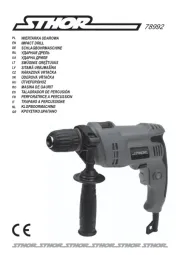
13 September 2025
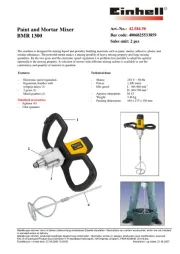
13 September 2025
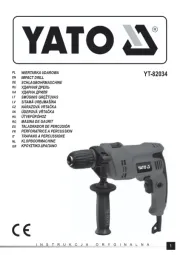
12 September 2025
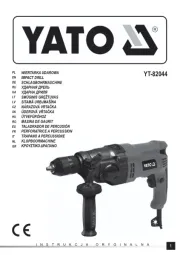
12 September 2025
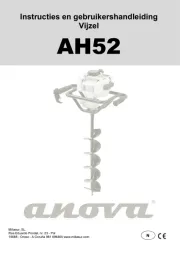
9 September 2025
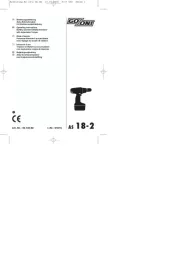
8 September 2025
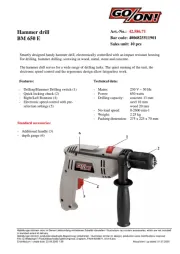
7 September 2025
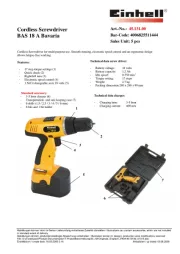
2 September 2025
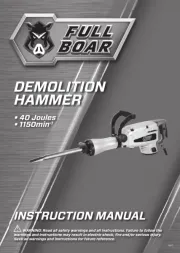
2 September 2025
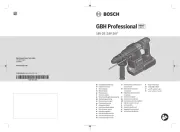
2 September 2025